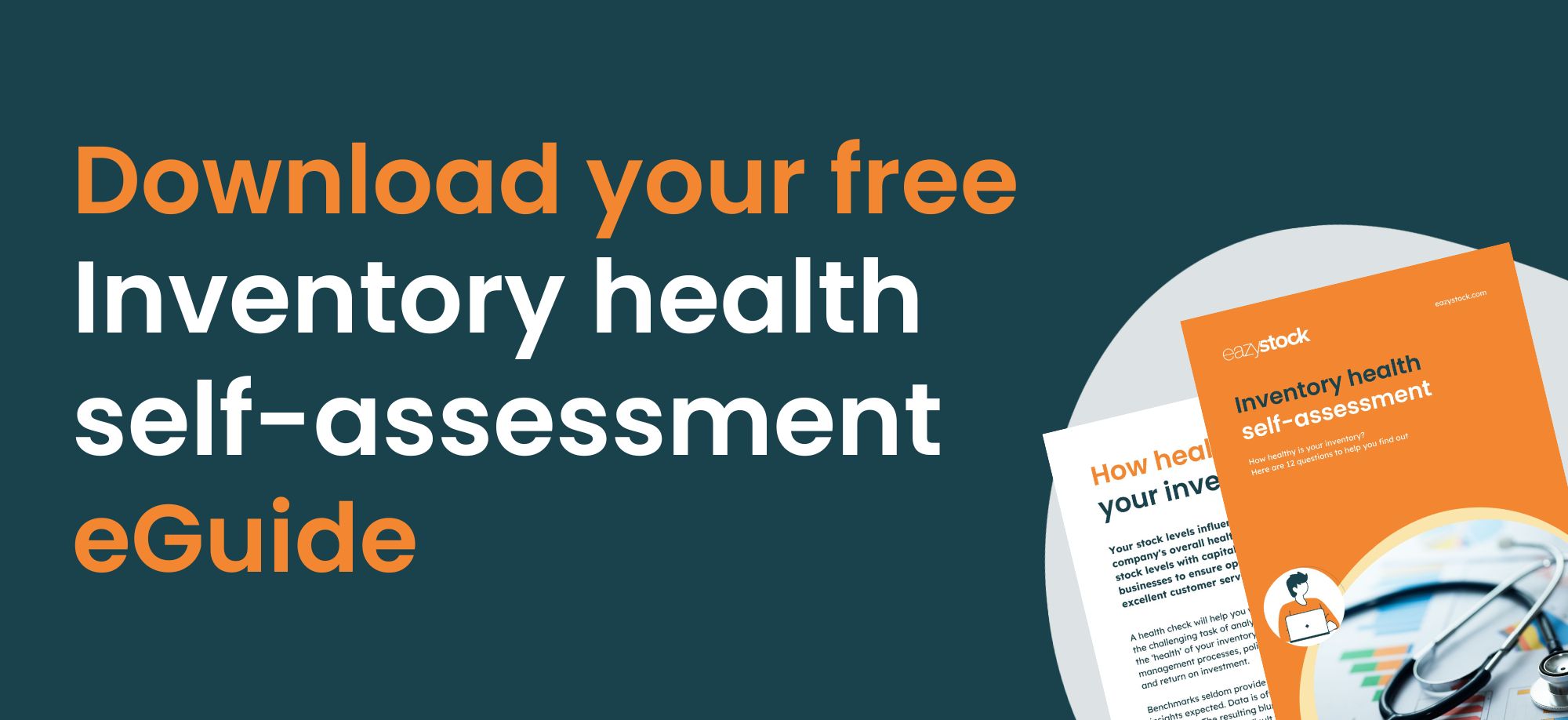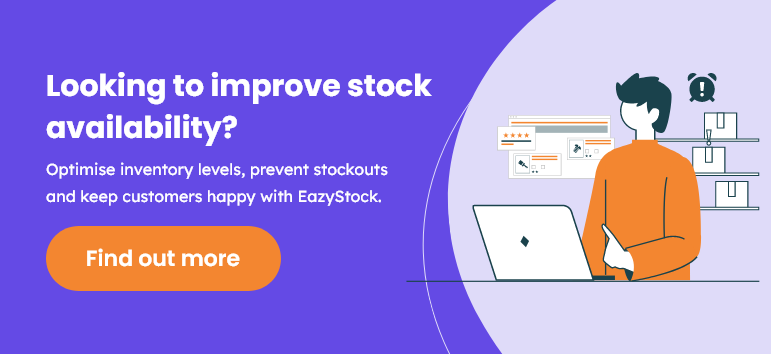5 cost-saving inventory reduction techniques
For businesses that carry non-perishable goods, it’s tempting to order and carry surplus stock to help meet market demand and hit order fulfilment targets.
In some circumstances, carrying excess stock can be good: having all items in stock helps avoid costly back orders and keeps customers happy.
However, holding too much can have negative implications, such as high carrying costs, over-investment in stock, and poor cash flow. Therefore, it makes sense to look for ways to reduce inventory and keep levels under control!
What are the potential cost savings from inventory reduction?
There are many financial benefits to introducing stock reduction strategies, mainly focusing on your excess and obsolete items. Carrying lower volumes of excess inventory in your supply chain can lead to lower carrying costs, such as reduced storage and inventory service costs. With less working capital tied up in goods sitting in the warehouse, businesses will also have more money to invest in fast-selling lines or other business areas.
If excess inventory is managed effectively and stock levels are reduced, it can prevent the accumulation of obsolete stock, which often has to be sold at a discounted price or even written off. It also helps keep cash flow healthy and positively impacts your end-of-year accounts.
Any organisation looking to lower costs across their supply chain and improve profit margins should, therefore, start by taking a closer look at how to reduce their stock levels. However, simply cutting inventory across your entire product range isn’t the right approach. Instead, here are five strategic inventory reduction methods that are certain to drive cost savings.
Top five inventory reduction techniques
There are many ways to reduce stock levels, but the key is to do so without harming your order fulfilment capabilities or service levels. Our top five inventory reduction strategies are:
- Use inventory classification
- Shorten order cycles
- Reduce supplier lead times
- Improve stock management across echelons
- Eliminate obsolete inventory
Let’s look at each in more detail:
1. How to reduce stock using inventory classification

For most companies, 80% of their revenue comes from 20% of their stock. While these percentages will vary, this is the theory behind ABC inventory analysis – a model that can be used to categorise your stock. Using ABC analysis, you can classify your inventory items into three groups based on their value to the business. A items are the most important in terms of the value they bring to your company, whilst C items are the least valuable. You can then prioritise the stock you carry, focusing on your A items to ensure better availability rather than B and C. This could include reviewing their demand forecasts more frequently or interacting with suppliers regularly to improve lead times.
If you’re looking for a more advanced form of inventory classification, you could consider ABC XYZ analysis, which considers forecastability (the likelihood that demand will vary from the forecast). For a more sophisticated means of inventory classification, you’ll need to use inventory optimisation software to do the job automatically.
A tool such as EazyStock will prioritise which inventory items to carry, based on multi-dimensional criteria, such as demand types, pick frequency, demand volatility and cost to sell (or profitability). It will dynamically set stocking policies and adjust reordering parameters for every item in your warehouse
This makes achieving high order fulfilment rates (or service levels) without carrying large volumes of every inventory item much easier. You can simultaneously reduce levels of less important items or not stock them, reducing inventory investment and saving on warehouse space.
2. Shorter order cycles help with inventory reduction
Reducing your order cycles and order quantities is another popular inventory reduction strategy that helps improve inventory turnover. Smaller, frequent ordering gives you more flexibility to meet changes in customer demand, whilst preventing stock building up and keeping carrying costs under control.
However, such a strategy has its challenges:
- You need to use accurate inventory forecast models that apply seasonality and trends to ensure any fluctuations in demand are accounted for when reordering stock.
- Ordering in smaller quantities is only possible if your supplier doesn’t require large minimum order quantities (MOQ). Sometimes, ordering in bulk brings discount benefits. If this is the case, you need to weigh up the unit cost savings against the increase in carrying costs. Using an economic order quantity formula can help.
- Are your internal purchasing processes efficient enough to allow you to reduce your order cycles? Reordering more frequently takes time, which teams using manual processes may struggle to find.
In each of these cases, inventory optimisation software can help. For starters, EazyStock has a powerful forecasting engine that uses various statistical algorithms to calculate demand, including seasonality and trends, to ensure replenishment meets market demand variances, no matter how subtle.
Secondly, EazyStock automatically calculates optimum order quantities based on specific variables, including demand forecast, MOQs and order cycles. It can use the economic order quantity functionality or its price break feature to calculate whether a large order at a lower ‘price per unit’ will save you money or if purchasing smaller quantities more frequently is more profitable.
Finally, because the entire reordering process in EazyStock is automated, inventory management teams find they have the resources to order as frequently as required. Inventory planning and replenishment become less about crunching numbers and more about working with EazyStock’s results – managing by exception and making informed and timely decisions.
3. Reducing supplier lead times will lower stock levels
Supplier lead times significantly impact the amount of stock you hold. For example, if lead times are long or continually fluctuate, you’ll need to carry more safety stock to cover the risk of run-out while waiting for your delivery.

The coronavirus outbreak shocked supply chains. Demand volatility increased alongside lead times, affecting many UK businesses. An overwhelming number of companies suggested they would re-evaluate their supply chains and look for ways to release their dependency on one supplier.
Those who did should have been better equipped to deal with the subsequent impact of international wars and global events that have disrupted routes through the Red Sea and Suez Canal. For those who didn’t, the disruption could be catastrophic.
Faster, reliable lead times give planners more flexibility when ordering inventory and offer a way to reduce stock levels and the associated costs.
EazyStock has a range of functionality to support supplier order management. In particular, it can dynamically track supplier lead times while adjusting safety stock and reorder points accordingly to help prevent stockouts.
4. Multi-echelon inventory reduction techniques
Businesses with multi-echelon (multi-tier) supply chains can find it challenging to optimise inventory levels at each stage, especially with decentralised ordering using independent forecasts and planning models. Typically, planners only forecast and order for their part of the supply chain, leading to a ‘bull-whip’ effect. This is when a slight fluctuation in demand at the top of the supply chain has an augmented effect on the demand forecasts further down, as each planner orders ‘a little extra’ and inflates their forecasts to cover the risk of run-out. However, when this is done at each supply chain echelon, these ‘little extras’ amount to surplus stock.
Inventory optimisation software, such as EazyStock, enables inventory management teams to plan and manage inventory with one centralised view. Forecasting and reordering calculations can be based on point-of-sale demand data, not demand at each stage of the supply chain. With a view of stock levels across all echelons, inventory can be balanced so excess stock at one location can be redistributed to other sites at risk of running out.
5. Eliminating obsolete inventory
Obsolete or dead inventory items are those without any customer demand. This typically occurs when a new product supersedes an older model or when tastes and fashions change and the drop in demand isn’t managed effectively.
To prevent dead stock from building up, it’s critical to understand where each inventory item sits in the product life cycle, e.g., growth, maturity or decline. As items begin to reach the end of their product life cycle, you can put stock reduction strategies in place to manage slow-moving items. These could include launching sales promotions to generate demand, finding new markets where the product is still popular, or simply adjusting reordering parameters so you’re reducing the amount of stock being ordered in line with the declining demand.
EazyStock automatically tracks inventory items through their product life cycle and then applies the most suitable demand forecasting algorithms, stocking policies and reordering parameters to ensure stock levels mirror future sales potential.
If you’re carrying excess and obsolete inventory, getting rid of it is essential to improving stock turnover and reducing overall stock levels. While selling obsolete stock at a reduced price might initially negatively impact your short-term profit margins, it will positively affect your bottom line in the long run.
Which inventory reduction strategy is the best?
Supply chain management teams can use many inventory reduction methods to deliver cost savings, but there’s no silver bullet. Simply reducing the stock levels of all product lines is not the answer.
With an inventory optimisation tool, you can optimise your inventory levels to have enough stock to meet upcoming demand without building up a surplus. If you’d like to understand more about your inventory’s ‘health’, contact our experts, who can carry out a free stock health analysis. We’ll profile your current demand patterns, identify your top 25 excess inventory items, and show you where you can cut back on investment.










